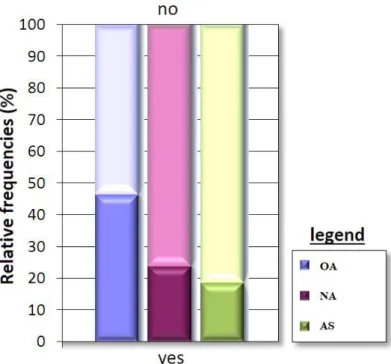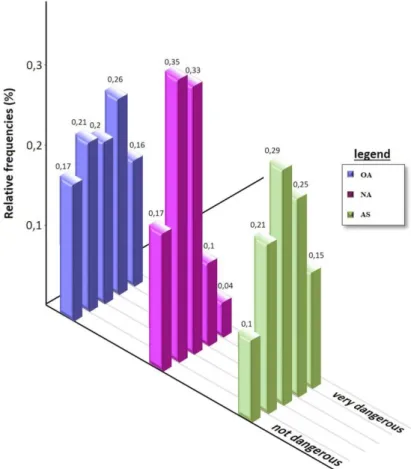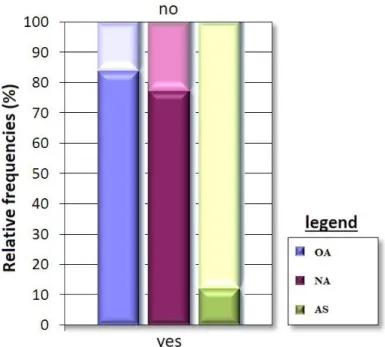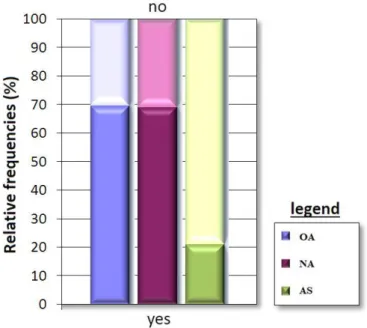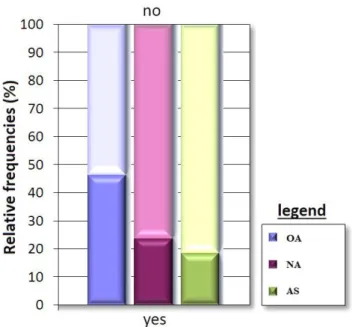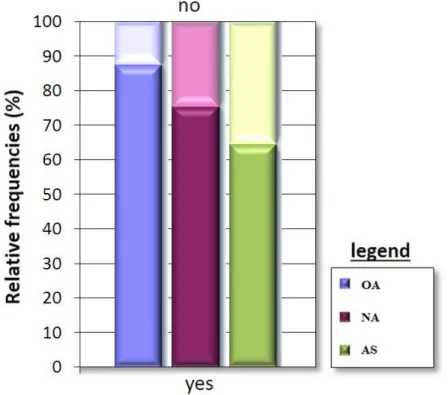RIGHTS OF INJURED, THE PROTECTION OF ATHLETES
Introduction and prevention of long-term health damage sustained in elite sport in the view of Sports Law and Health Law
Abstract of Ph.D thesis Dr. Szabó Tünde
Doctoral School of Sport Sciences University of Physical Education
Supervisor: Dr. András Nemes, PhD honorary professor Consultant: Dr. Tamás Sárközy, DSc professor emeritus Official reviewers: Dr. Gábor Pavlik, DSc professor emeritus Dr. Róbert Szuchy, PhD associate professor Head of Final Examination Committee:
Dr. Kornél Sipos, PhD professor emeritus Members of Final Examination Committee:
Dr. Andrea Gáldiné Gál, PhD associate professor Dr. Tekla Papp, PhD professor
Budapest
Introduction
In our accelerated world nowadays the role, relevance and marketing of sports changed significantly, and athletes appreciate to be included in the top even more.
With the help of nowadays technology almost all events can be followed, the results are available real time and successful athletes can become well recognized in moral and financial terms as well in unbelievable short time, therefore their example wanted to be followed by millions.
The expectations of International Sport Federations and the International Olympic Committee on international sport events shifted to entertainment to secure the financial sustainability of events with advertisement and sponsorship rights. Therefore, regulations of registration change to narrow the number of registered athletes or even teams which increases the competition for national places as well.
Because of this pressure elite athletes and their coaches push their limits for qualification or success without caring for risks, injuries, re-injuries or health impairment of performance enhancers. They do not take consequences into account and mostly do not even know the legal and health related regulations, which are in turn usually incomplete or underregulated.
Elite athletes often risk serious injuries in the hope of gaining better results. As athletes chase themselves to get better results and achieve success more and more sport injuries or even sport accidents happen, therefore even the number of long-term health damaging injuries are increasing. Raising awareness, proper preparation and prudence are indispensable for the injury prevention and protection of elite and youth athletes alike.
In the literature review first the liability in legal regulation was demonstrated. Sport related liability has to be tackled in civil law in respect of personality rights and reparation and it is really important to find those who has liability as motivation for prevention can be raised by them. Even incentives can be focused on those who bear liability to create systems for prevention.
The second part of the literature review consists of the different types of sport injuries
of the literature review the literature of concussion litigations settled by Court of Arbitration for Sport (CAS) were demonstrated. These disputes were from Professional Boxing and American Football and their settlements started a positive movement in the United States to turn to prevention and enlightenment.
Objectives
The purpose of my dissertation was to investigate the medicine related and legal related aspects of sport injuries, the cause and effect relationships and the responsibilities, liabilities and obligations of sport professionals. The dissertation also wants to raise awareness of decision makers to focus on prevention and protection of athletes not only for reparation.
The aim of the empirical part of the dissertation is twofold. First to investigate long- term sports injuries, their prevalence, general identification of and consultation about injuries, and the knowledge among Hungarian athletes related to injury prevention. This focus is important as the dissertation gathers the knowledge of the related fields to be able to give recommendations for decision makers to create the most supportive and the safest environment for Hungarian athletes to train and focus on their results. The different probabilities or the dangerousness of the different sports has to be investigated as well as the existing regulations to be able to recommend a more comprehensive regulatory system. Secondly the dissertation tries to identify the knowledge in the individual level as well to combine the first approach with athletes’ perception which could underpin the recommendations.
The following research questions has been created to reach the aims of the empirical part:
1. Is there any difference under the different sports in point of dangerousness, or level of perceived danger?
2. What kind of regulations and systems are in place in the different Hungarian sport associations to recognize and prevent athletes’ injuries?
3. Is there a difference in the occurrence, knowledge, and support of athletes according to level of performance?
4. What kind of special medical support is provided to elite athletes and what kind of education and information are given to them by medical doctors?
5. How do athletes view the dangers of their sports?
6. Would athletes risk injuries or compete with the symptoms of injuries?
7. How often do athletes use medications, painkillers, or anti-inflammatory drugs (or have used them in their elite sports career)?
Research questions has been narrowed with propositions and hypotheses to get more focused results in the empirical research. As the first two research questions are qualitative questions the following propositions were created:
P1: Regardless of sport elite athletes are in danger of injuries even if the different sports differ in their level of dangerousness.
P2: The rules and regulations set by self-organizing bodies are not sufficient therefore new regulations are needed in the managing authority level to let comprehensive sport specific regulations be created.
From the third research question quantitative research were conducted therefore the following hypotheses were created:
H1a: Athletes suffer long-term injuries regardless of the level of their performance.
H1b: Similarly, regardless of the level of their sports involvement, the examined athletes do not perceive their sport to be very dangerous.
H2a: Medical support given to Hungarian elite athletes is better than that given to amateurs.
H2b: Consultations about sport-specific injuries are more frequent for elite athletes.
H2c: The frequency of medical instructions to increase athletes’ awareness about sport- specific injuries depends on the level of the athletes’ sports involvement, but is not sufficient even for elite athletes.
H3: Elite athletes use pain relievers more often than amateur sportsmen.
H4a: Athletes compete when injured or ill, regardless of their level of performance.
H4b: Athletes compete with injuries because of external pressure.
H5: Athletes risk injuries and long-term health damage for the sake of exceptional results, regardless of the level of their sports involvement.
Methodology
As the aims of the empirical part were twofold the methodologies for the scientific investigation were twofold as well, qualitative methods were used for the first two research questions and quantitative for research question 3-7.
For the qualitative part a case based approach were followed, where case studies were created about successful Hungarian Olympic Sports and Team Sports. From the 16 strategic Olympic Sports and 5 spectacle Team Sports (the sixth spectacle team sport was introduced after the research was conducted) 12 cases were created. Cases were based on document analysis of existing regulations, a semi-structured case interview and the submission of semi-structured questionnaire, which were about the internal regulations of the National Associations of Olympic Sports, with special regard to regulations concerning sports medicine and the prevention of sports injuries.
For the quantitative part a questionnaire was designed to survey athletes regarding the research questions. The population of the quantitative research consisted of three subsamples of Hungarian athletes. The athletes were classified according to their level of competition.
The first group is composed of athletes who have won an Olympic medal either in individual or in team sports in the Summer Olympic Games (Group of Olympic Medal- Winning Athletes – OA). In Hungary, around 520-530 Olympic medalists are living.
With quota sampling 94 athletes were selected from this group. This is 18% of the total population, which is a high rate considering the composition of the total population. The first subsample is representative of sports and gender, but not of age as it was very difficult to find and include elderly Olympians.
The second group is composed of active national athletes who have participated in international competitions, either individually or on a team. Most of them are Olympians who have not won a medal in the Olympic Games (Group of National Athletes – NA). The number of active national athletes is approximately 2,000, out of
which 105 were selected with quota sampling. The second subsample is also representative of sports and gender.
As a control group, the third subsample is made of active amateur athletes, mostly from non-Olympic Sports. Information about them was obtained through their national sports association (Group of Amateur Sportsmen – AS). Based on estimation, the number of the control group consists of between 400,000-500,000 sportsmen. A total of 303 of these individuals were selected with quota sampling for the sample, which is representative of sport and gender. However, due to the lack of exact data, the characteristics of the total population could only be roughly estimated and the representativeness of the third subsample should be considered with caution.
In the different subsamples the questionnaires were filled differently. In the OA group personal interview was done with the athletes and the questionnaire was filled during the interview. Members of NA and AS groups filled the questionnaire themselves. The questionnaires were sent to them by their national sport association and the filled questionnaires were sent back by the respective associations. From 15th September 2015 to 30th November 2016 the given sport associations sent 621 questionnaires to their athletes. With the questionnaires filled in the interviews altogether 502 completed questionnaires were obtained which means that the response rate was very high, at 70,2%.
The dataset of Olympic medal winners consists 94 answers (18.7% of the whole database), the dataset of nationally selected athletes consists of 105 answers (20.9%), and the dataset of amateur athletes, the control group, consists of 303 answers (60.4%).
Thus, the research covers a high proportion of the total population of Hungarian Olympic medalists, which is unique. The size of the other two subsamples, comprised of national athletes (NA) and amateur sportsmen (AS), is also extraordinary.
The data was analyzed with the Chi-square test for dichotomous variables and the Kruskal-Wallis H-test for questions with the Likert scale to try the statistical power of the hypotheses. Plots were generated using WinStat for Excel (R. Fitch software, Bad Krozingen, Germany). The level of significance was set at p < 0.05.
Results
In the qualitative part of the research 7 out of the 12 Association stated that they deal with the issue of injury prevention in theory of training and also apply prevention practices like strengthening muscles, stretching and proprioceptive training. These Sport Associations do not have specific injury prevention regulations which is lacking in their international regulations as well.
In Hungary three Sport Associations, namely the Hungarian Athletics Association, the Hungarian Swimming Association and the Hungarian Boxing Association, possess detailed international medical handbook, which sums up the medical knowledge precisely of the given sport. The regulation of boxing is especially detailed with medical regulations on pre-competition and post-competition medical examinations, on the role of the referee and the medic and on all regulations concerning the prevention of injuries.
There are two Sport Associations which leads with example in injury prevention of athletes. The Hungarian Wrestling Federation created a dedicated workgroup in the medical committee which investigate the injuries and their possible prevention in wrestling, deliver presentations and publish scientific papers. Based on these their international federation (UWW) invited the Hungarian workgroup to create the medical handbook of wrestling.
Hungarian Football Association implemented the so-called F-MARC program, which focuses on prevention of non-contact injuries and FIFA also created football player specific structured warm-up practices. These practices can be seen in the television right before football matches.
The program emphasizes warm-up, prevention practices and regeneration as injury prevention processes in youth development. The Hungarian FA also recognized the practical benefits and the need of this program and launched its own prevention program successfully as well as its footballer injury register.
In the quantitative part of the empirical research to test the first hypothesis I’ve investigated the prevalence of injuries in the different groups (see figure 1.).
Figure 1.: Severe injuries of Hungarian athletes Source: author’s own source
Figure 1 shows that severe injuries are frequent as significant part if the athletes suffered severe injuries, therefore raising awareness of athletes on injuries is indispensable.
The athletes’ opinion about how dangerous their sport is proved to be similar. The five- level Likert scale was used, where 1 meant not dangerous and 5 meant very dangerous (see Figure 2.)
Figure 2.: Perceived danger of the given sport Source: author’s own source
All athletes perceived their sport as moderately dangerous, the mean of Olympic medalists’ answers was 3.02 with 0.27 standard deviation, of nationally capped athletes’
answers was 2.48 with 0.19 standard deviation and of amateur sportsmen’s answers was 3.12 with 0.13 standard deviation. According to the results there is no significant difference (p=1.469) in the perceived danger of sports by the different groups. From the interesting result that the athletes perceived their sport as moderately dangerous we can conclude that most probably Hungarian athletes did not find out nor did not receive proper information on the dangerousness of their sport and they can just accept the danger they perceived. From these opinions it can be seen as well that it does not matter in which level athletes compete as they perceive the dangerousness very similarly.
Medical background of athletes was also investigated, it can be seen in figure 3. whether athletes had their own dedicated medical doctor or not.
Figure 3.: Medical support with dedicated doctor Source: author’s own source
The findings reveal a significant difference among the groups regarding their medical support. A total of 84% of the Olympic medal winners and 77% of the national athletes reported that they had the medical support of dedicated medical doctors during their sports career, whereas only 12% of the amateurs reported having similar experiences (Chi-square test, p < 0.00001).
It can be seen in the results that in the case of Olympic medalists and nationally capped athletes the Hungarian sport government supporting activity is successful and nationally capped athletes can prepare with substantive coverage of medical doctors. The medical attention of sportsmen with lower performance level is low, which is not ideal for injury prevention.
The research data show that the athletes had been instructed or educated about the
Olympic medal winners and 68.6% of the national athletes reported that they had been instructed about the medications they used, whereas only 20.1% of the amateurs had been so instructed (Chi-square test, p < .00001; see Figure 4).
Figure 4.: Instructions on the effects of medications used by Hungarian athletes Source: author’s own source
However, the fact that one-quarter of them experienced just the opposite should call attention not only to the responsibility of those in the medical field, but to all who can contribute to athletes’ awareness of injuries and/or injury prevention.
Although different groups got instructions on the injuries of their sports with different frequency, but the level of information was not enough (see Figure 5.).
Figure 5.: Long-term health damage of sport-specific injuries Source: author’s own source
Medical instructions about sport-specific injuries were reported by 45.7% of the Olympic medal winners, whereas only 23.8% of the national athletes and 18.5% of the amateur sportsmen reported having medical instructions about sport-specific injuries.
There is significant difference among the groups of athletes about instructions on sport- specific injuries (p<0.00001). With lack of medical information, three-quarters of the examined athletes do not believe that sport-specific injuries can cause long-term damage to their health.
It is safe to assume that if athletes compete when injured it is detrimental to their health.
In figure 6. it can be seen how many athletes competed while they were injured.
Figure 6.: Participation of Hungarian athletes in competition while being injured or ill
Source: author’s own source
Regarding the athletes’ experiences about competing while they were injured or sick, no significant differences were found between the subsamples. The majority of the athletes competed in spite of injury or sickness (for example, with chills, a temperature, or a urinary tract infection) regardless of which group they belonged to (88.3% of the Olympic medal winners, 78.1% of the national athletes, and 73.6% of the amateurs).
Therefore, no significant difference was found between the groups (Chi-square test, p = 0.012).
Competing with injuries could have several different meanings however depending on the extent of the injury, which I could not measure in the questionnaire. With small bruises, strains or minor cold competition can be permitted, but in more severe circumstances (e.g. illnesses with fever) it is a serious mistake and irresponsibility to let athletes to compete and sadly even medical doctors are not always consistent on this.
Although most of the athletes competed while they were injured, a tendency could be noticed: lower level athletes are less likely to compete when injured or ill.
The findings concerning the reasons behind competing while injured discovered that 78.7% of the Olympic medal winners, 47.6% of the nationally selected athletes, and 50.5% of the amateur sportsmen did it of their own volition (see Figure 7).
Figure 7.: Reasons for competing while injured or ill Source: author’s own source
A total of 17% of the Olympic medal winners, 26.7% of the national athletes, and 17.5% of the amateur sportsmen have competed while injured or ill because of performance pressure in their sport. External pressure by their coach or parents played very little role in the athletes’ decision in this regard.
The peculiar symbiosis of moral and financial motivations can be captured from the
injury if they would be medal contenders in the Olympic Games, even if they were warned, the danger of re-injury is high and the consequences would be long-term (see Figure 8.).
Figure 8.: Willingness of Hungarian athletes to compete in the Olympic Games while injured
Source: author’s own source
Figure 8. shows the athletes’ willingness to risk damaging or even destroying their health in the hope of reaching outstanding achievement in their sport. A significant difference was found between the different subsamples concerning jeopardizing their health in order to gain fame and a reputation in their sport. A total of 87.2% of the Olympic medal winners, 75.2% of the national athletes, and 64.7% of the amateurs stated that they would risk injury if they could become medal holders in the Olympic Games (p = 0.00008)
Although the differences between the individual subsamples are significant, even in the amateurs’ group more than half of the athletes would compete with a lesser injury. They would be willing to cause trouble for themselves even though they know that competing with any kind of injury involves risk: their injury may get worse, and it may have
permanent consequences. These results reveal an unhealthy feature of Hungarian sport:
many athletes attribute too much importance to victory. Jeopardizing one’s health is definitely against the true spirit of sport.
Conclusions
Based on the findings, the propositions and hypotheses of our research were justified or refuted as follows:
The first proposition (P1) was verified, since elite athletes are in danger regardless of sport even if there is a difference among sports in their level of dangerousness.
The second proposition (P2) was also supported as the rules and regulations set by self-organizing bodies are not sufficient therefore new regulations are needed in the managing authority level to let comprehensive sport specific regulations be created.
The first assumption (H1a) was verified, since the examined athletes reported long-term injuries regardless of the level of their sports involvement. H1b was also justified: the athletes in question did not consider their sport to be seriously dangerous.
All three parts of the second hypothesis were supported because significant differences were found between the groups of athletes with different levels of sport performance in connection with the medical support provided to them and with the frequency of consultation about sport-specific injuries and medical instructions to increase the athletes’ awareness.
The third hypothesis was refuted because, contrary to our hypothesis, the research data show that elite athletes do not use pain relievers more frequently than amateurs.
The first part of hypothesis four (H4a) was accepted because the majority of athletes with different levels of sports involvement competed when they are injured.
The second part of hypothesis four (H4b) had to be rejected because, according to the athletes’ report, they did not compete with an injury because of external pressure.
The fifth hypothesis (H5) that athletes are willing to take risks in the hope of reaching outstanding sports achievements was partly supported because the vast majority of the athletes reported that they would take the risks (although a significant difference was found between the three groups of athletes in this regard).
Athletes long for success and want to push their performance. Without proper medical information, however, these desires can lead to permanent health damage. Based on the results of our research paper, we must draw the attention of Hungarian sport managers and the leaders of the Hungarian sports associations to the need for the prevention of injuries and the avoidance of long-term damage. The primary method for this prevention could be full disclosure of such information to athletes along with adequate medical support, and this issue should be emphasized in all sports.
The discussion about long-term sports injuries and especially about the prevention of these injuries is very scarce in the literature. My dissertation made an attempt to contribute to this discussion by revealing elite and amateur athletes’ experiences and knowledge about potential injuries. According to this study, athletes generally underestimate the dangers of their sports and do not have proper knowledge about the injuries they can sustain or the consequences of these injuries. Injured athletes would even risk long-term health damage if they could become medal winners in the Olympic Games. Injury prevention already exists in Hungary, and the next step should be educating athletes about injuries.
In further research it would be worth to investigate the rehabilitation after injuries and further recommendations could be elaborated to the Government about the protection of athletes against negative consequences to let them focus only on preparation to next results and successes.
List of publications by the author
Publications related to the topic of the thesis:
Szabó T, Stocker M, Győrffy B, Nemes, A. (2018) Knowledge and Attitude of Hungarian Athletes towards Long-term Sports Injuries. Physical Culture and Sport. Studies and Research, 80: 27-38.
Szabó T. (2018) Hosszú távú sportsérülések megelőzése a magyar sportban. Magyar Sporttudományi Szemle, 75: 82.
Szabó T, Stocker M. (2017) Legal Protection for Athletes To Prevent Injuries Legislative Regulation in Hungary. Int J Sports Sci Med, 1: 24-30.
Ács P, Melczer Cs, Sávolt-Szabó T, Welker Zs, Gyuró M, Baumann P, Sey-Morvay K, Raposa B. (2017) Overview of the Fitness Parameters in the Students of Pécs University. Health Problems of Civilization, 11: 150-157.
Stocker M, Szabó T. (2017) A hazai sportirányítás szerepe és tevékenysége a kiemelt hazai sportesemények esetében. Magyar Sporttudományi Szemle, 73: 56-77.
Sávolt-Szabó T. (2016) A fiatalkorú sportolók jogi védelme a sérülések megelőzésének érdekében. Magyar Jog, 63: 51-57.
Sávolt-Szabó T. (2016) Fejsérülések a futballpályákon: egészségügyi és sportjogi szabályozás. Magyar Sporttudományi Szemle, 67: 45-50
Sávolt-Szabó T. (2015) A Sportsérültek jogai: Az agyrázkódás szabályozása és a felelősség kérdése. Magyar Jog, 62: 365-377.
Publications not related to the topic of the thesis:
Szabó T (szerk.), Bánhidi M (szerk.), Szőts G (szerk.). A sportturizmus gazdasági és társadalmi kérdései Magyarországon. Magyar Sporttudományi Társaság, Budapest, 2018.
